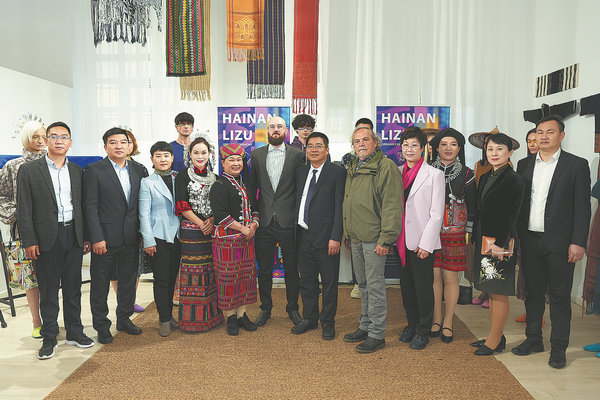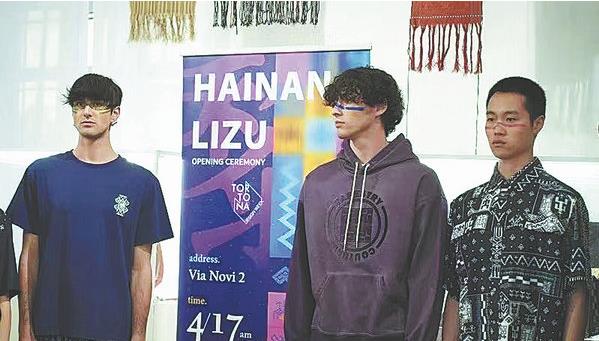

Experts say that the skills involved in the craft have been key in the history of China's textile industry.
Spinning is the most challenging part of making Li brocade cloth, according to Liu, as it requires time and patience. "Cotton and wild hemp on the island are collected in the rainy season, and rubbed slowly with a spinning wheel," she explains. "The rough fibers are first processed into linen, which is then rolled into hemp yarn, and eventually woven into fine, soft cloth."
There are mainly five branches of the Li ethnic group across the province. They speak different dialects, have different customs and dress in different styles of Li brocade.
Liu has not only mastered the textile techniques of her own community, but is also able to introduce the classic patterns and colors of all the Li ethnic branches.
Despite differences, traditional Li brocade, with a history of more than 3,000 years, often depicts a yearning for a better life. It usually features blue and black, as, in the old days, these two dominant colors hid dirt and stains as a result of working and daily chores more effectively, Liu says.
In her works, the background color of Li brocade is still mostly black, or blue and black, and occasionally red.

"Now that people's lives have become better, the color combinations of Li brocade are richer than before," she says. "Young people will choose bright colors for their clothing."
In 2005, Liu set up a company and called upon women in her village to practice the skills and make Li brocade. Two years later, with the support of the local government, Liu established a workshop and provided free courses on the techniques to fellow female villagers.
"I help them learn and improve their Li textile techniques. The works they weave are often bought by my company, and we sell them to markets across the country and even abroad," she says. "In this way, I can bring economic benefits to everyone involved in inheriting the craft."
Liu's company combines modern design with traditional styles, and produces clothing items, including skirts, scarves, bandannas, cheongsam and ties, as well as other daily use items and home decoration, such as mouse pads, umbrellas, handbags and murals, featuring Li brocade patterns.
In the past, only women learned Li brocade-weaving, but Liu has passed her craft on to her son, who in turn has passed them on to her grandchildren. Her grandson, Wang Chengye, now 8 years old, began to learn the textile technique at the age of 3. He is now able to weave at least four types of Li brocade patterns.
As Li brocade grows in popularity, so, too, does Liu's fame. There are also more Li brocade fashion shows being held, and demand for her company's products often outweighs supply, she says.
For Bai Yujie, a visitor from Beijing who has traveled to Wuzhishan several times, the beautiful, handmade Li brocade is a must-have on her shopping list. "I think Li brocade should not only be placed in museums or just in Li people's homes. By putting traditional elements together with modern design, it can definitely be introduced to more people," she says. "Now there are more creative product options like scarves and accessories with exquisite Li brocade patterns on them. Every time I visit Wuzhishan, I will buy such gifts for my family and friends."